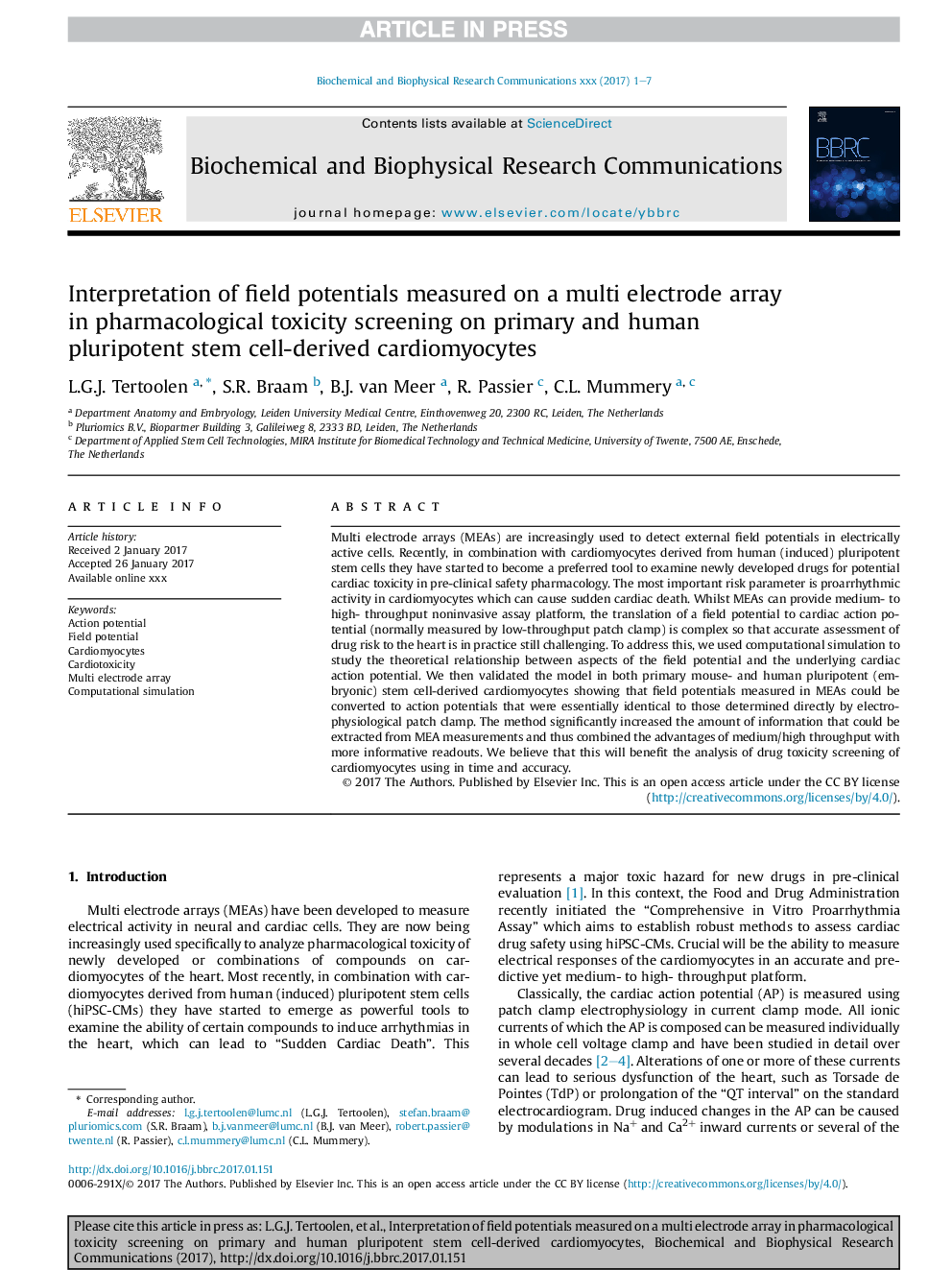| Article ID | Journal | Published Year | Pages | File Type |
|---|---|---|---|---|
| 8293868 | Biochemical and Biophysical Research Communications | 2018 | 7 Pages |
Abstract
Multi electrode arrays (MEAs) are increasingly used to detect external field potentials in electrically active cells. Recently, in combination with cardiomyocytes derived from human (induced) pluripotent stem cells they have started to become a preferred tool to examine newly developed drugs for potential cardiac toxicity in pre-clinical safety pharmacology. The most important risk parameter is proarrhythmic activity in cardiomyocytes which can cause sudden cardiac death. Whilst MEAs can provide medium- to high- throughput noninvasive assay platform, the translation of a field potential to cardiac action potential (normally measured by low-throughput patch clamp) is complex so that accurate assessment of drug risk to the heart is in practice still challenging. To address this, we used computational simulation to study the theoretical relationship between aspects of the field potential and the underlying cardiac action potential. We then validated the model in both primary mouse- and human pluripotent (embryonic) stem cell-derived cardiomyocytes showing that field potentials measured in MEAs could be converted to action potentials that were essentially identical to those determined directly by electrophysiological patch clamp. The method significantly increased the amount of information that could be extracted from MEA measurements and thus combined the advantages of medium/high throughput with more informative readouts. We believe that this will benefit the analysis of drug toxicity screening of cardiomyocytes using in time and accuracy.
Keywords
Related Topics
Life Sciences
Biochemistry, Genetics and Molecular Biology
Biochemistry
Authors
L.G.J. Tertoolen, S.R. Braam, B.J. van Meer, R. Passier, C.L. Mummery,
